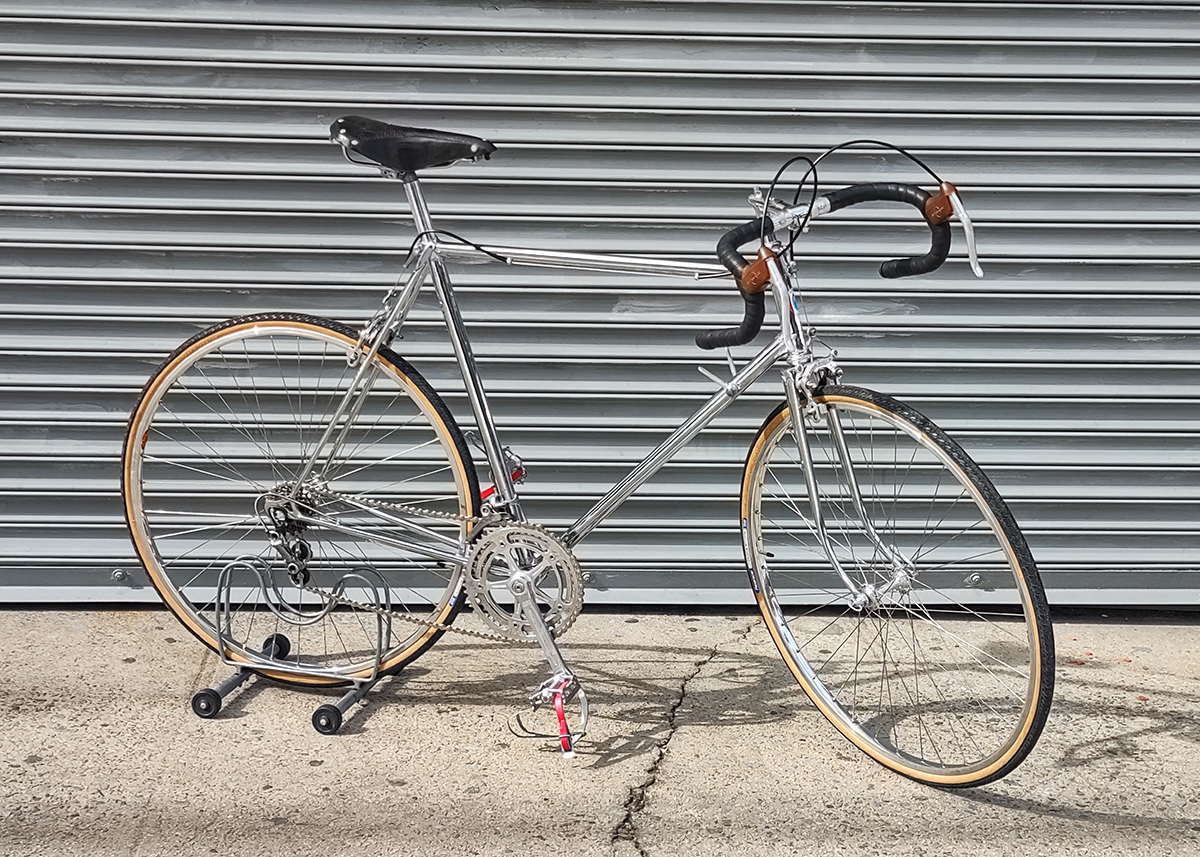We’ve restored quite a few bikes over the years. This feature project post gives a more in depth showcase of one of our favorites.
Norm’s father bought this bike in the 1970s. He thought it was a Carlton from the late 60s. Norm and his father have been riding it hard for 50 years and it was looking a bit tattered. Norm asked Nomad to complete a full restoration back to like-new condition.
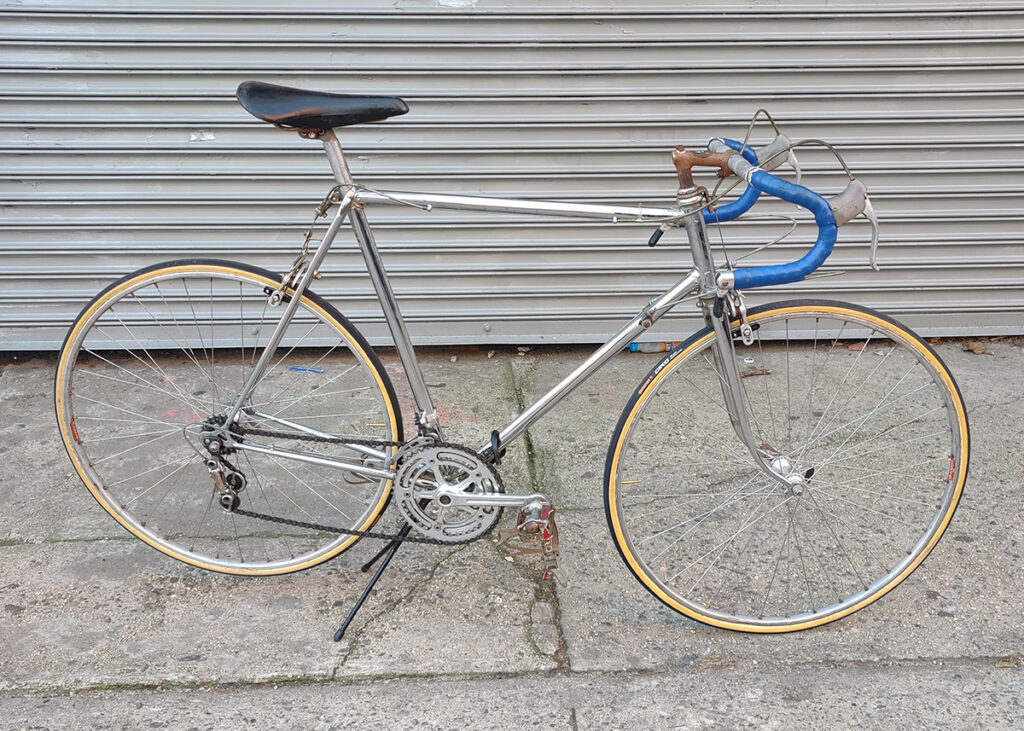
Research
Our first step was to verify the brand and model and identify which parts were original and which were subsequent updates. Carlton was a small British manufacturer of high-quality light weight racing bikes that was absorbed by Raleigh in 1961. They subsequently produced the millions of Raleigh ten speeds that flooded the US market in the 1970s, the Gran Prixs, Super Competitions, etc.
An online Carlton serial number database identifies this as a 1962 model. The 1962 Carlton catalog shows only one model equipped with Campagnolo components, their top of the line “Flyer” model.
So… we assume that this bike is in fact a 1962 Carlton Flyer.
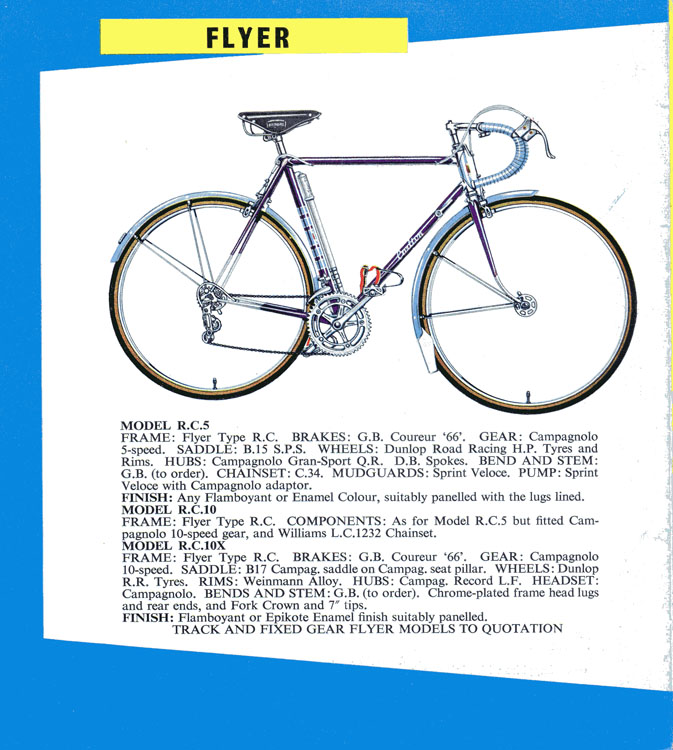
The 1962 Carlton catalog shows that the Flyer was offered with a Campagnolo Grand Sport groupset. Many of this Carlton’s components appear to be original, to match what is shown in the catalog and can be restored and retained. For example:
- Campagnolo Grand Sport Rear Derailleur (in production until 1963)
- Campagnolo Record 151 chainring bolt diameter crank (In production until 1966)
- Campagnolo Record pedals
- Campagnolo Record seatpost
- Campagnolo Gran Sport headset
- Cinelli model 3 steel stem and Cinelli bars
However, the bike appears to have been updated sometime in the mid-1970s with several Japanese parts, all of which should be replaced:
The frame featured Reynolds tubing, Nervex professional lugs and Cyclo rear dropouts. It originally had what the British call a “flamboyant” finish, a clear colored lacquer applied over a chrome plated base. However, over time, all but a few flakes of the lacquer had fallen off, exposing the chrome finish. The chrome was badly corroded in several locations.
Plan of Attack
Next, we developed a restoration plan and itemized budget: Our goal was to restore the bike as close as possible to it’s original 1962 configuration, removing all subsequent additions and restoring all the existing components.
Although replicating the original flamboyant finish would be gorgeous, it would just fall off again; chrome is too slippery for the paint to adhere. Carlton did offer a chrome plated finish option, so we retained the chrome; it’s much more durable. Rick Rano of V Twins Cycles in Oyster Bay, NY de-plated then re chrome plated the frame fork and stem. This involves acid dipping then polishing the frame then applying a copper base coat and two coats of chrome.
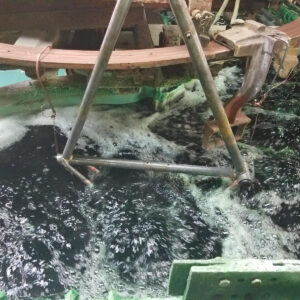
We replaced the non-original and worn-out components with the correct ones, either pulled out of the Nomad stash or found on eBay. Some highlights include.
- Campagnolo Gran Sport front Derailleur
- Campagnolo Nuovo Record downtube shifters.(modified with earlier Gran Sport screws)
- New old stock Regina 5 speed freewheel.
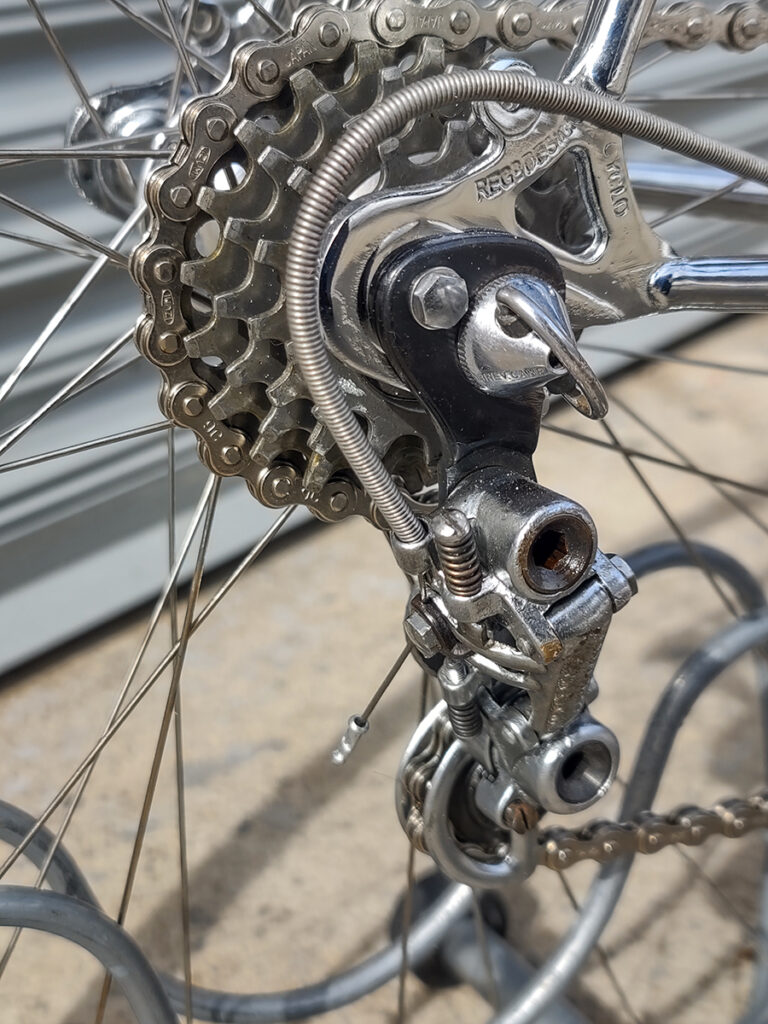
- New old stock Wright saddle. (the original would have been a Brooks – but 50-year-old NOS saddles are hard to find)
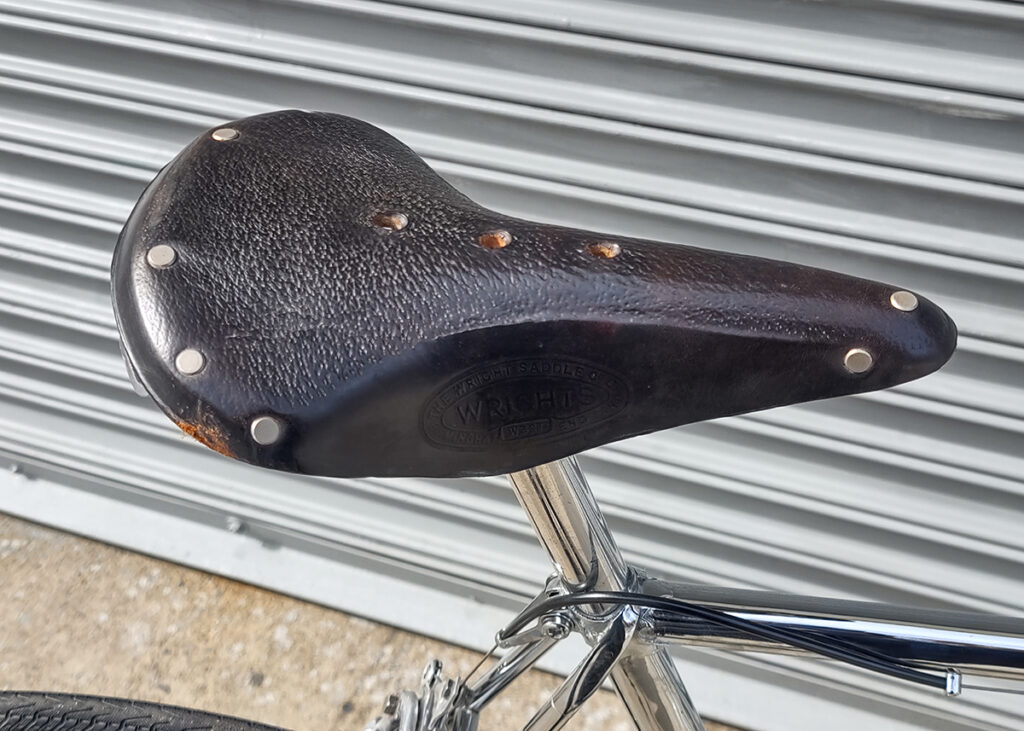
- New old stock period correct Weinmann brake levers
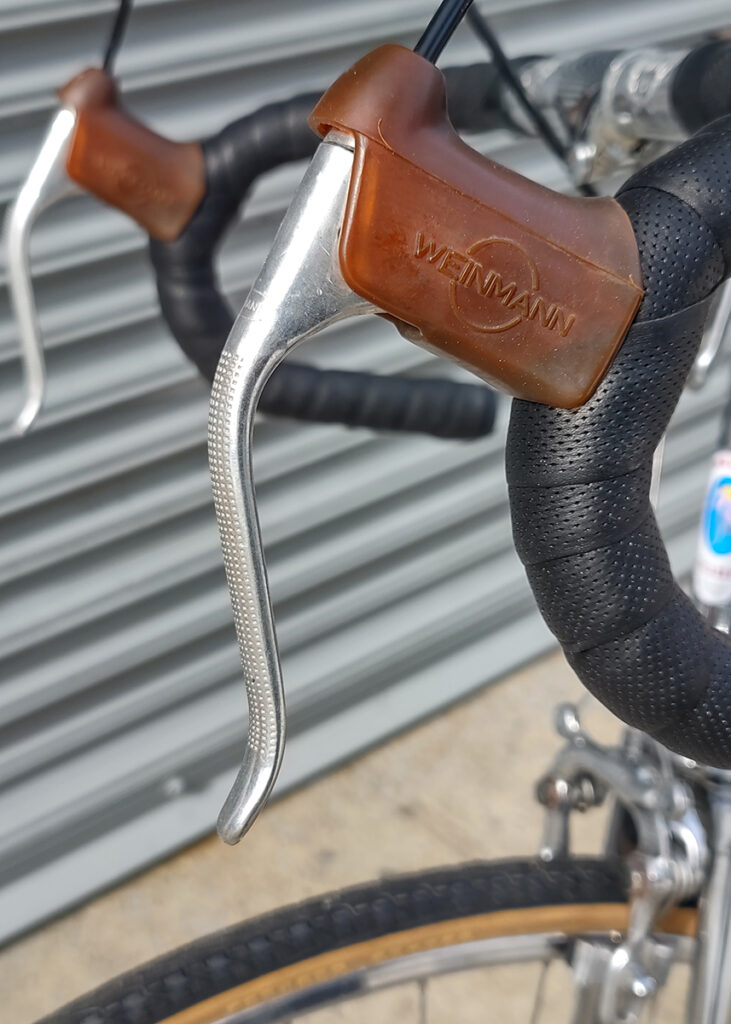
- Bottom race of Campy headset. (the original had ball dents in its race)
- Campagnolo Left crank arm (we replaced the Suntour arm with a correct Campy arm)
- Campy pedals
All original components were disassembled, polished and rebuilt.
The Weinmann 999 brake calipers were polished and the springs and brake pads replaced. We filed off the lettering and polished new stainless steel pivot nuts to replace the rusted steel ones.
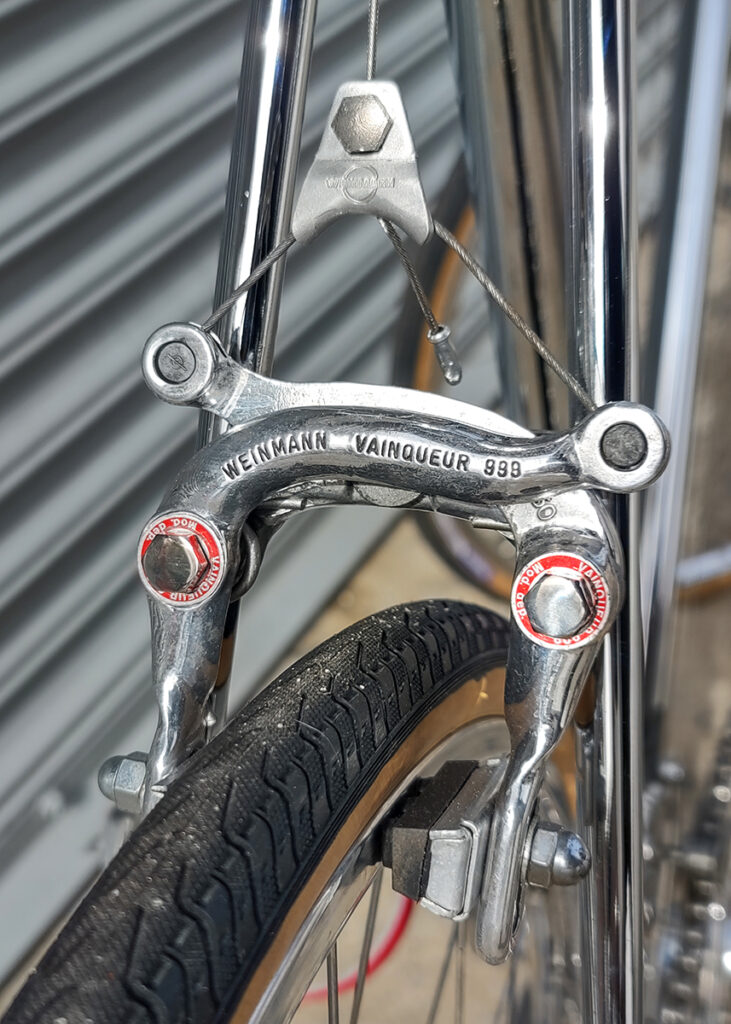
The Cinelli stem was re chromed, the Cinelli bars polished.
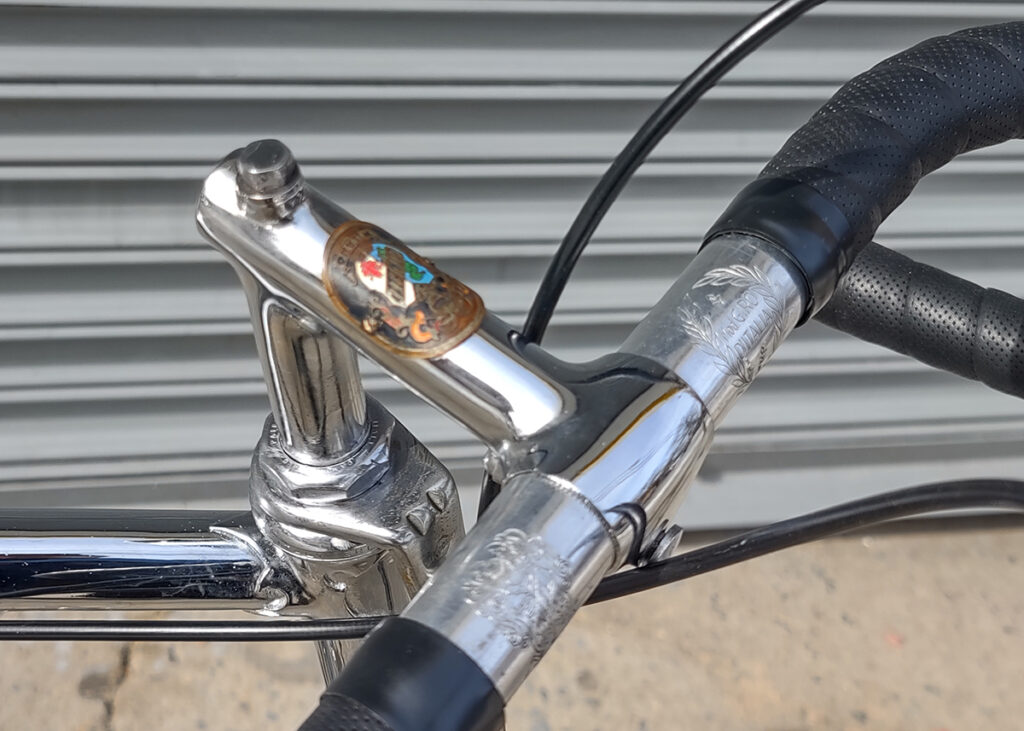
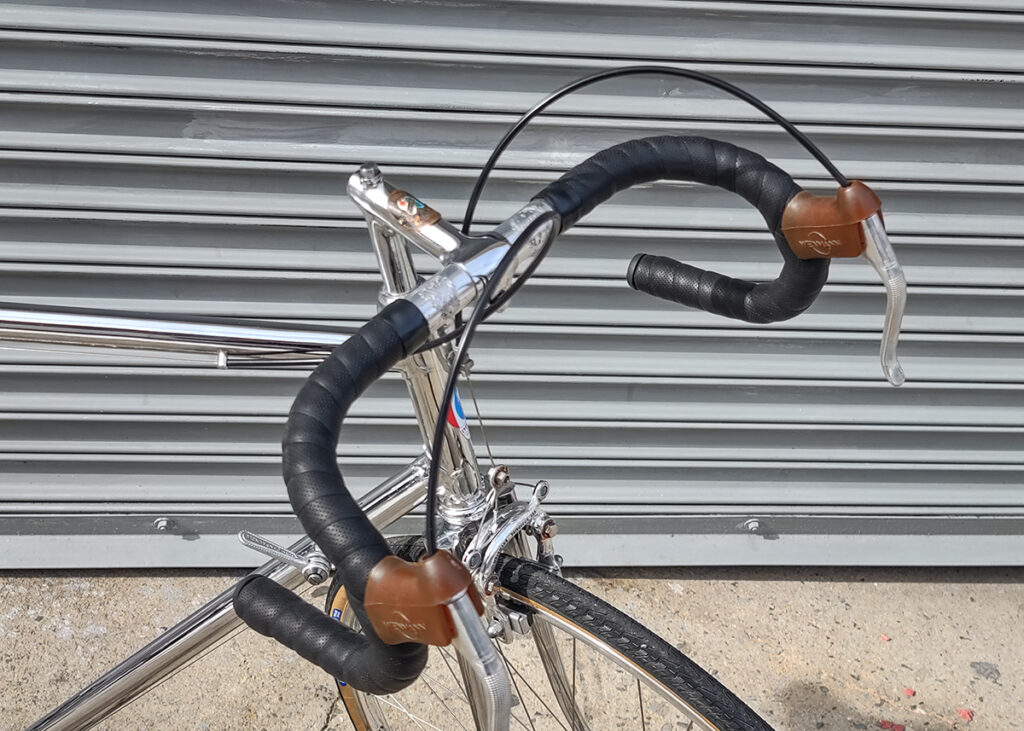
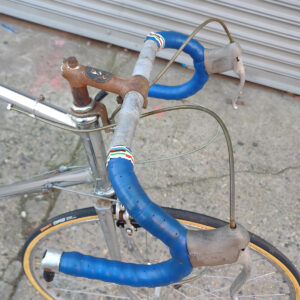
The Campy seatpost was polished and the seat clamps re chrome plated.
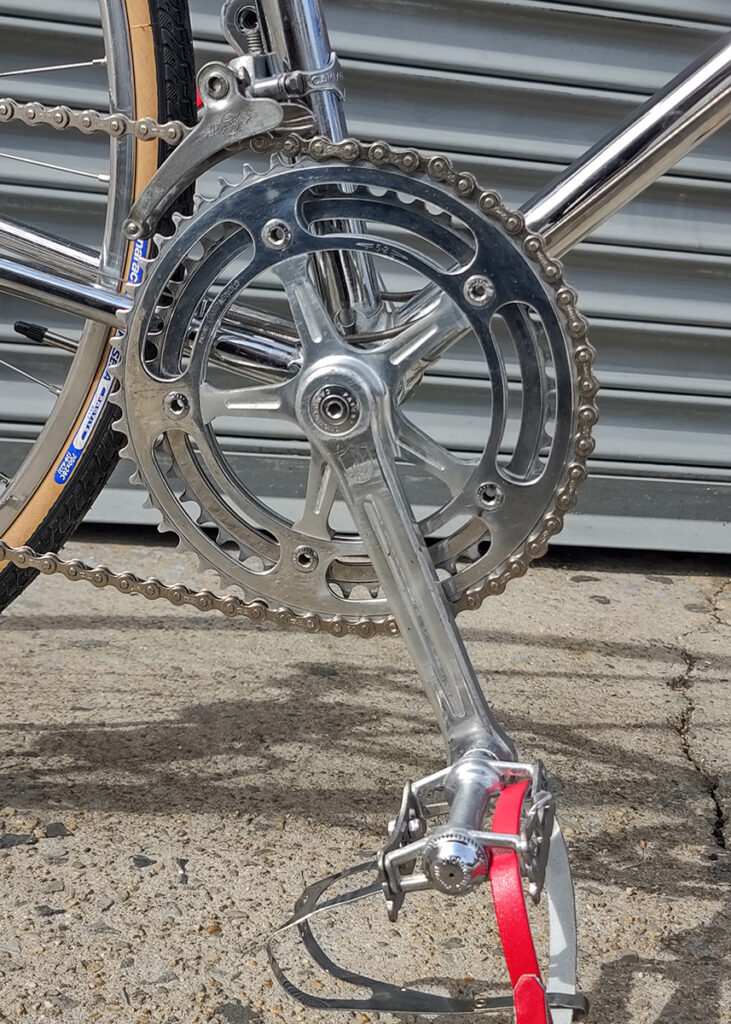
The Crank polished and dust caps and left crank arm replaced. The pedals were replaced with new toe clips and straps.
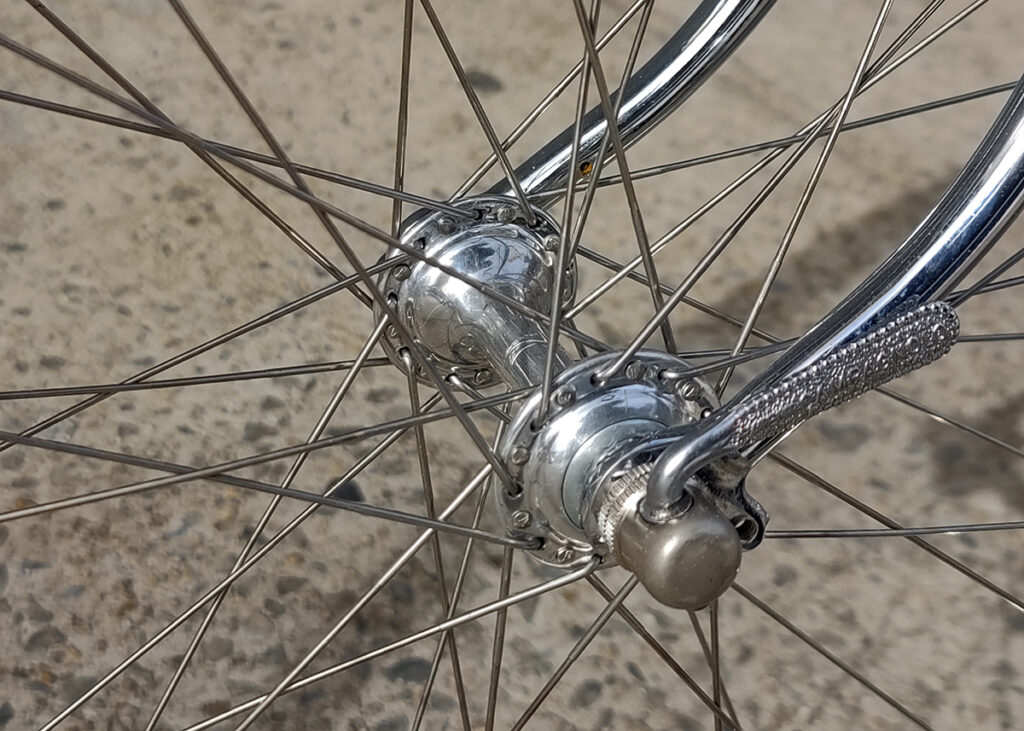
The Campagnolo gran sport hubs were from the 1970s, so technically not period correct. But they were close enough to be retained. We polished and rebuilt them and re-laced them to new old stock period correct Super Champion clincher rims with NOS Regi Alpina butted stainless steel spokes. We replaced the skewers with pre 1965 skewers with the flat handles.
A few contemporary components were used as well:
- Dipell leather handlebar tape.
- Panaracer Pasella tires
- Brake cables and housing
- New ball bearings at all locations
- Izumi chain
The total process took about 40 hours to complete over the course of several months. In the end, it came out not too shabby and ready for another 50 years of hard riding.
The Finished Bike
